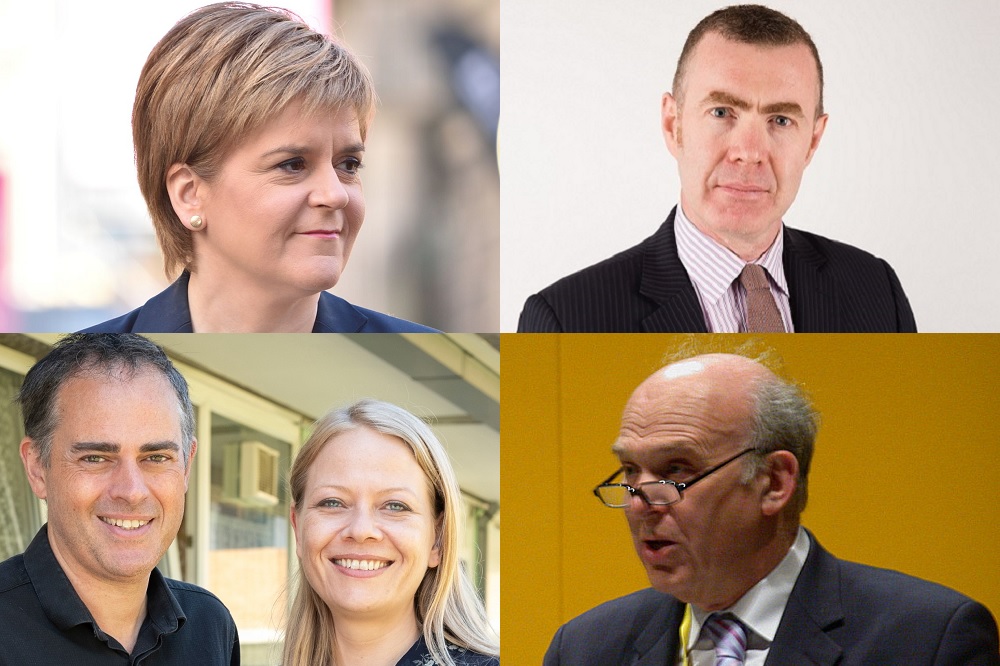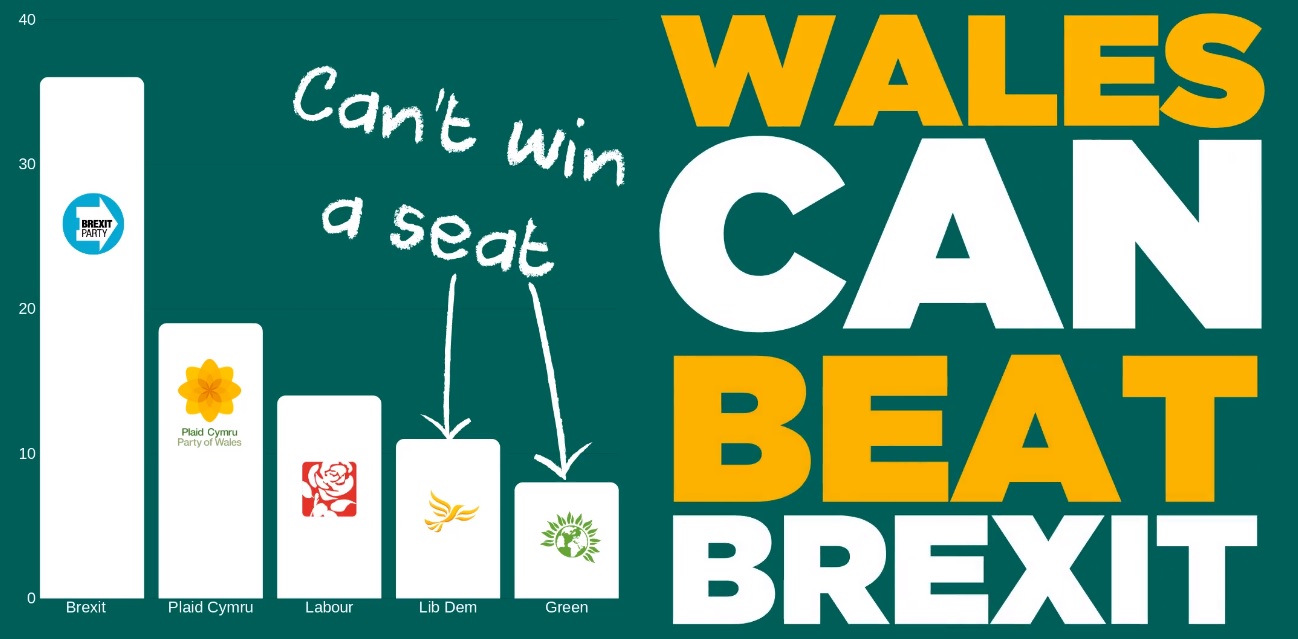This EU Election was a big disappointment by Remain parties

Ifan Morgan Jones
We will have to wait three days – until Italian polls close on 10pm Sunday – to know the result of the EU election.
Not even Jesus’ disciples had to wait that long for a result, and the time will no doubt be filled with endless speculation.
If you looked at Twitter yesterday, you would think that the Remain parties had it in the bag. I must have read hundreds of tweets by people enthusiastically switching to Plaid Cymru, the Greens, and the Liberal Democrats.
Twitter can be misleading, however. The social media sites’ demographics are far younger, middle-class and more left-leaning than the population at large. I.e. the site’s users are the exact kind of people who would cast a protest vote for a Remain party.
The reality is that we’re likely to see something closer to what the polls suggested – a victory on 30-40% of the vote for the Brexit Party, big falls for Labour and the Tories, and a Remain party in second place in most nations and regions despite a split vote.
In other words, the Remain/Leave split will be much the same as the 2014 EU Election, just that another 10% of the Conservative vote will have gone to Nigel Farage’s party.
That doesn’t suggest that pro-Brexit forces have made much real progress. But they don’t need to – they won the referendum.
It was Remain that needed to use this election to signal that there had been a sea-change in public opinion, and that the people were turning their backs on Brexit.
That didn’t happen. This was a poor election campaign by Remain and raises real questions about whether they would actually win a second referendum if one was ever held.
After all the talk of lessons being learnt from the EU Referendum and the slick and well-organised campaigning for a People’s Vote, I had expected that the Remain electoral machine would be ready to go.
However, unlike Nigel Farage who had seen the election coming from a mile away, and had understood that it would be a de facto second referendum and set up a new Brexit Party, they were caught on the hop.
The most obvious first step would have been to set up a cross-party Remain coalition. But not even Plaid Cymru and the Greens, who represent the same party in the EU Parliament, did so. That’s madness (and another consequence, it seems, of a lack of planning for an election that was always likely to happen).
And there was no sign that Remain had learnt the lessons of why their message didn’t appeal in 2016, either – in fact, little or no effort was made to actually convince anyone who voted Brexit to change their minds at all.
Instead, when they did eventually get going (in the last week and a half before polling day – with the Brexit Party already having hoovered up 30% of the vote), the Remain parties focused their attention on competing with each other, carving up the Remain vote between them.
The Welsh Liberal Democrats contribution was particularly unedifying, taking their usual dodgy bar graphs to a whole new level with the misleading moving dodgy GIF bar graph below.
Only we can stop the Brexit Party getting a second seat in Wales. We need Green, Change UK and remain Labour voters to lend us their votes on 23rd May to stop Brexit. pic.twitter.com/p6OgjaNbYT
— Welsh Liberal Democrats (@WelshLibDems) May 17, 2019
Tanks
Beyond some online activity, however, the Liberal Democrats and Green’s contribution in Wales was practically invisible – they had clearly decided to invest their resources in more winnable seats elsewhere.
This to all intents and purposes left Plaid Cymru with an open goal in Wales – a Labour party at war with itself, and a demoralised Conservative Party.
And also the perfect foil – their opposite, in a way – a far-right British nationalist party to compete against.
Despite this, the campaign began in rather shaky fashion, with a series of text-heavy pamphlets which failed to make the central point that Plaid Cymru wanted to stop Brexit, why they wanted to do so, and that they were the largest Remain party.
Plaid Cymru and the SNP have essentially the same message. Who does the better job of getting it across? pic.twitter.com/18ZdJILLhi
— Ifan Morgan Jones (@ifanmj) May 15, 2019
And while Nigel Farage was speaking to a crowd in Merthyr Tydfil, Plaid Cymru were launching their manifesto on a farm in Arfon. What happened to putting your tanks on your opponent’s lawn?
It was a very defensive display which suggested that the party was aiming to protect its one MEP rather than taking this supermarket-sweep like opportunity to take advantage of Welsh Labour’s weakest electoral position in 100 years and bag as many new Plaid voters as possible.
It was only in the final days of the campaign when they found themselves thrust into second place in the polls that Plaid Cymru’s campaign really seemed to come alive, particularly on social media.
It may seem that I’m being too harsh on the under-resourced Plaid Cymru here. But Plaid is so held back by a lack of media coverage that its own communication efforts have to be near perfect if they’re to break through.
It needed a simple, uncluttered message that people could understand in a second, and until the very last Facebook advert (below) the party didn’t seem to find one:

Too late
If Plaid Cymru do come in second place with around 20% of the vote (and it’s a big if despite the polls) it will no doubt be presented as a triumph, but will, in reality, be largely due to Labour’s plunge in the polls.
And the most worrying thing for Plaid Cymru of all was that Labour’s Vote fell 15% in the polls and Plaid’s vote only went up 1-4%.
The theory behind Plaid Cymru being the next Welsh Government was that when Welsh voters did eventually, one day, become fed up with Labour that Plaid would get their votes.
This election has cast real doubt on that – and added to my suspicions that it’s small-c conservatism rather than Labour’s socialist principles that has maintained their vote in the valleys for so long.
Plaid Cymru have long sold themselves as more socialist than the Labour Party, banking that an appeal to people’s economic circumstances would sway their vote. But perhaps that simply isn’t what voters have been looking for.
After all, the huge vote for the Brexit Party suggests that people don’t feel that strong an attachment to Labour – when a party has come along that they do prefer, they have voted for it with few qualms.
On the evidence of this election, it may be too late to stop Brexit – the Remain forces had their chance, and they blew it.
Plaid Cymru, however, will get their big chance in the Assembly election in 2021. If they are really the next Welsh Government, they will need to run a more direct, simple campaign that cuts through.
We can’t run Nation.Cymru without your help! If you support the development of an independent Welsh media for the people of Wales, please donate now!
Support our Nation today
For the price of a cup of coffee a month you can help us create an independent, not-for-profit, national news service for the people of Wales, by the people of Wales.




